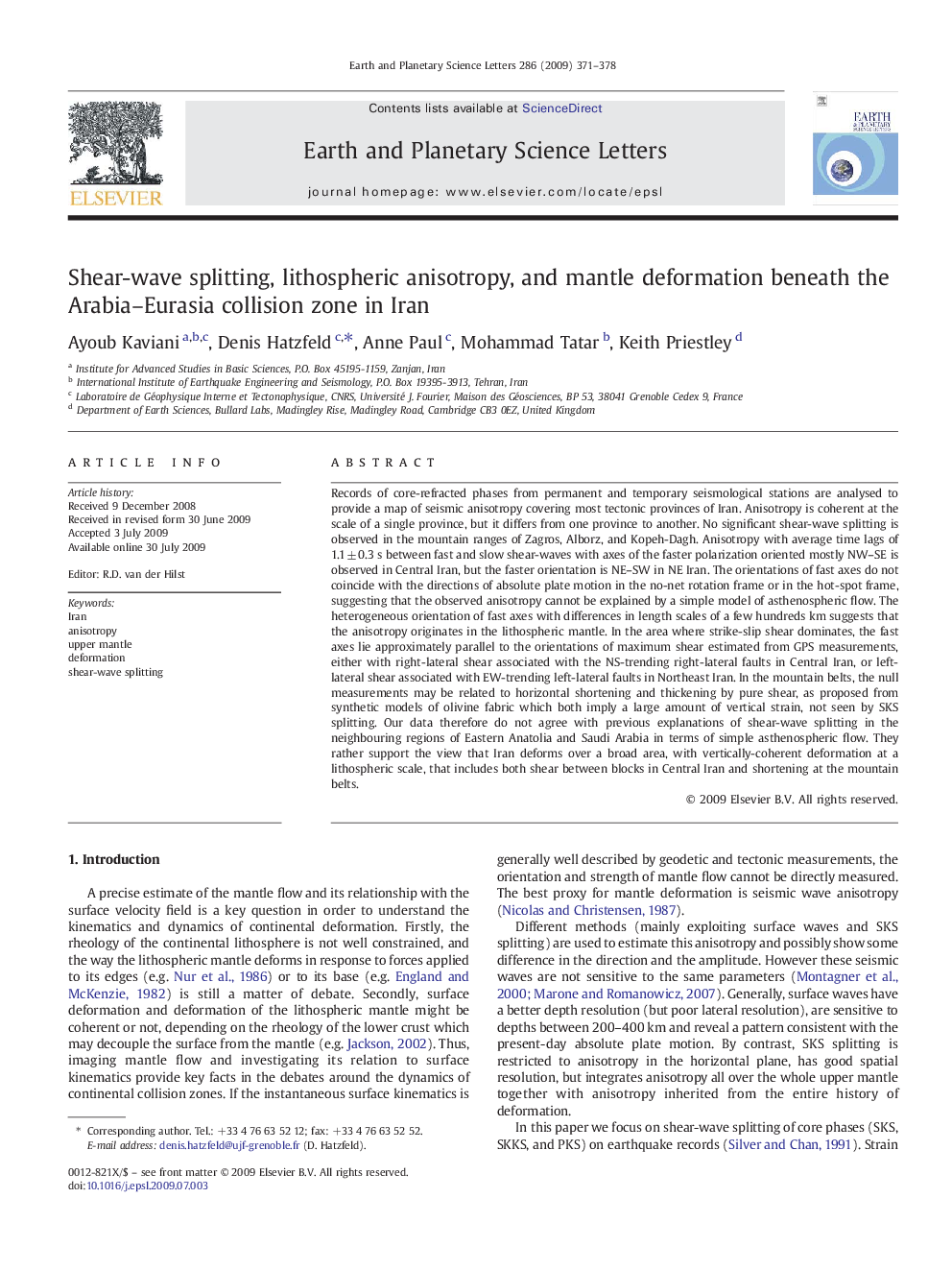| کد مقاله | کد نشریه | سال انتشار | مقاله انگلیسی | نسخه تمام متن |
|---|---|---|---|---|
| 4679115 | 1634866 | 2009 | 8 صفحه PDF | دانلود رایگان |

Records of core-refracted phases from permanent and temporary seismological stations are analysed to provide a map of seismic anisotropy covering most tectonic provinces of Iran. Anisotropy is coherent at the scale of a single province, but it differs from one province to another. No significant shear-wave splitting is observed in the mountain ranges of Zagros, Alborz, and Kopeh-Dagh. Anisotropy with average time lags of 1.1 ± 0.3 s between fast and slow shear-waves with axes of the faster polarization oriented mostly NW–SE is observed in Central Iran, but the faster orientation is NE–SW in NE Iran. The orientations of fast axes do not coincide with the directions of absolute plate motion in the no-net rotation frame or in the hot-spot frame, suggesting that the observed anisotropy cannot be explained by a simple model of asthenospheric flow. The heterogeneous orientation of fast axes with differences in length scales of a few hundreds km suggests that the anisotropy originates in the lithospheric mantle. In the area where strike-slip shear dominates, the fast axes lie approximately parallel to the orientations of maximum shear estimated from GPS measurements, either with right-lateral shear associated with the NS-trending right-lateral faults in Central Iran, or left-lateral shear associated with EW-trending left-lateral faults in Northeast Iran. In the mountain belts, the null measurements may be related to horizontal shortening and thickening by pure shear, as proposed from synthetic models of olivine fabric which both imply a large amount of vertical strain, not seen by SKS splitting. Our data therefore do not agree with previous explanations of shear-wave splitting in the neighbouring regions of Eastern Anatolia and Saudi Arabia in terms of simple asthenospheric flow. They rather support the view that Iran deforms over a broad area, with vertically-coherent deformation at a lithospheric scale, that includes both shear between blocks in Central Iran and shortening at the mountain belts.
Journal: Earth and Planetary Science Letters - Volume 286, Issues 3–4, 15 September 2009, Pages 371–378